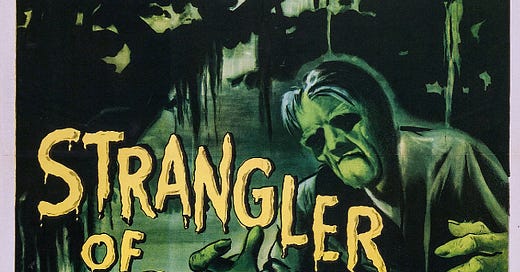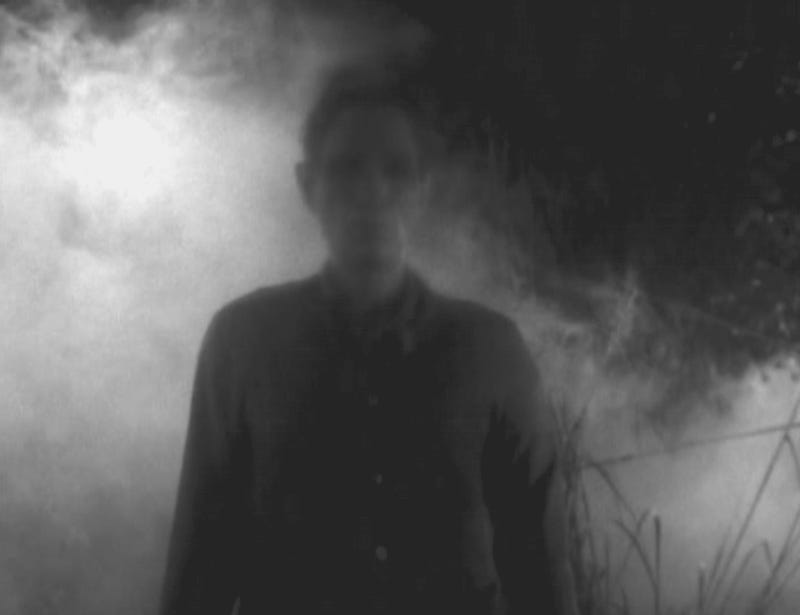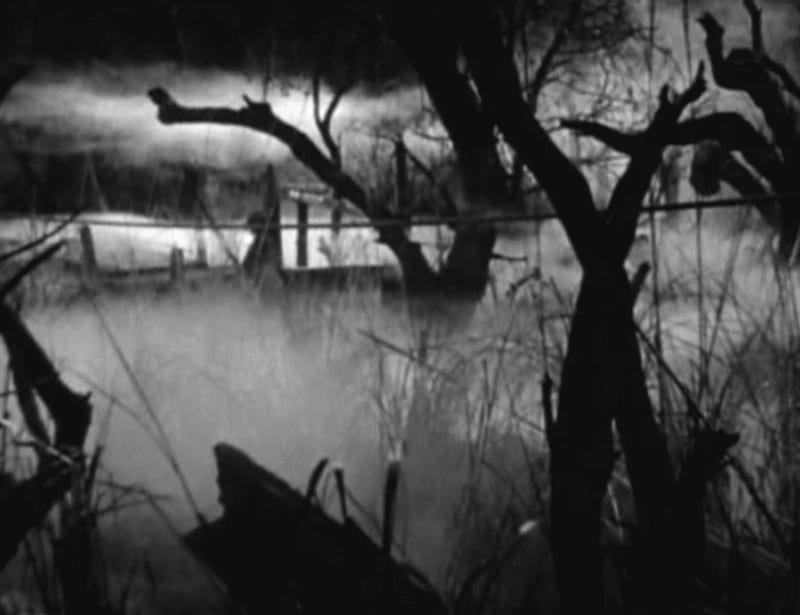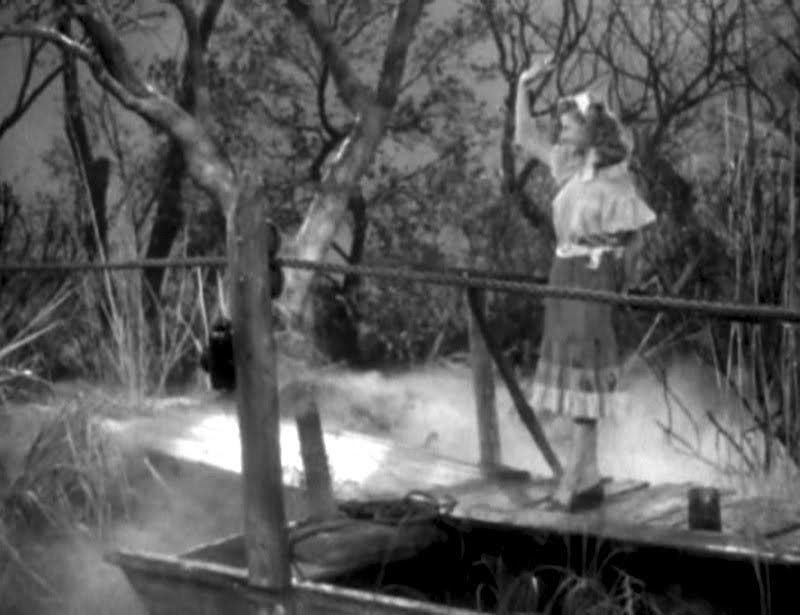When discussing the horror output of Producer’s Releasing Corp., better known as PRC Studios, the terms “dreadful,” “terrible,” “low budget,” and “low rent” seem to leap from the mouth of critics and even fans of these films. There are two horror films in the PRC oeuvre however, that are sometimes heralded as classics, Edgar Ulmer’s Bluebeard and Frank Wisbar’s Strangler of the Swamp.
While PRC was certainly not considered a trendsetter in it’s day, the horror films of today seem to be greatly inspired by PRC’s trademark of kicking the story off with a bang. Strangler of the Swamp begins with an ominous shot - a noose hanging from a tree over stagnant water. Ferryman Joseph Hart sails his boat across the marsh with two visible passengers. A third, invisible to the camera, is laying on the ground dead. The body is that of a local boy who was found strangled by vines with only his legs sticking out of the water.
***Just a warning even though this film is 74 years old, that I will be getting into spoilers for this review***
Upon getting the body to land, the superstitious locals rant and rave about it being another murder committed by “the strangler.” The hook is set and the story is already moving quickly. Before too long, Ferryman Hart is killed by the spirit of the previous ferryman, Douglass, who was framed for murder by Hart and executed by the townsfolk.
A few days after Hart’s death, his granddaughter comes back to town and upon hearing of her grandfather’s death, offers to take over the ferry. She soon falls in love with Chris Sanders (Blake Edwards), the son of Christian Sanders, the town’s most well-to-do citizen, who also returns home to take over his father’s successful farm.
One night, the spirit decides to go after the younger Sanders, who is saved by Maria from a hanging noose. The ghost, upset at Maria’s meddling, decides he will kill Sanders at all costs. Why he’s more interested in killing Sanders, when Hart’s granddaughter is easy pickings before him, I don’t know, but he vows he will kill Sanders anyway. When Maria and the elder Sanders get Chris into the ruins of the old church, the ghost can not come onto the consecrated ground, but the damage is done.
Chris Sanders needs the help of a doctor or he will die, but should they leave the blessed church grounds, the spirit will kill him. Maria gives herself up willingly to the spirit of Douglass in exchange for him leaving the town alone. Rather than killing Maria, the ghost gets sentimental and hangs his head in shame. He walks away from Maria and kneels in silent prayer in the marsh as Maria urges him to “Give up the Fight! Leave vengeance to the Almighty! Make peace with him!” and he soon vanishes.
The first half of the film does a great job setting up a classic ghost story with the superstitious townsfolk obsessed with the legend of this supernatural assassin taking revenge on those who wronged him. The ghost itself is quite creepy looking and the legend is more well thought out than most of these films usually are. The ending with the all-too altruistic heroin giving her own life to Douglass in order to save the man she loves, only to be left alone by the vengeful spirit felt far too forced. Why would this spirit, who has spent the last 57 minutes killing everyone in town and their descendants regardless of whether or not they had any involvement in his murder suddenly have a crisis of conscience when the granddaughter of the man who set him up to be executed instructs him to? It feels like a copout.
Furthermore, the idea that the spirit could be satiated by one life being given up willingly to save the lives of the others was only mentioned as a theory of the supposed crackpots in the village, who are never shown to have any kind of knowledge of the supernatural and rely on mere speculation. Never once do we get any kind of character who can be seen as an authority on the subject even mentioning it as a plausible end to the terror. It’s mentioned by an old lady and an old man, and discredited by the only character in this film that seems to be at all rational (although even he mysteriously sent his son away from the small village years ago). It seems that the town knew all along how to stop it, but there’s no explanation as to how they came across this information. It just doesn’t make sense.
Strangler of the Swamp was Frank Wisbar’s remake of his own 1936 film Fährmann Maria, with much of the basic plot left intact but the differences, scarce as they may be, make the two films very different. In the original, there is no vengeful spirit, just Death as he searches for those he must take to the other side.
Strangler of the Swamp is an entertaining B thriller and certainly not a bad film. There are worse ways you can spend 58 minutes of your life. I’d recommend it for fans who enjoy atmospheric ghost stories.












